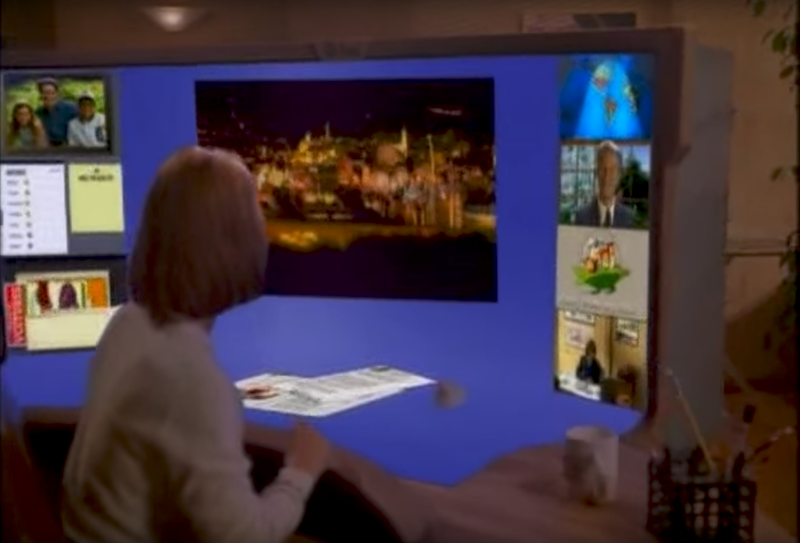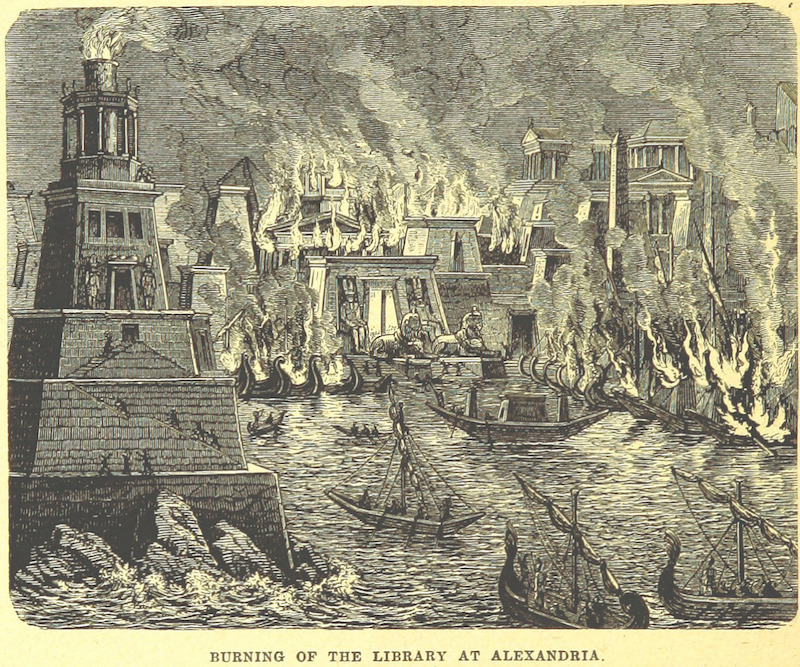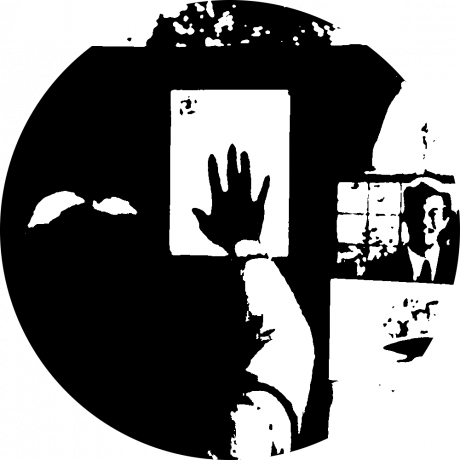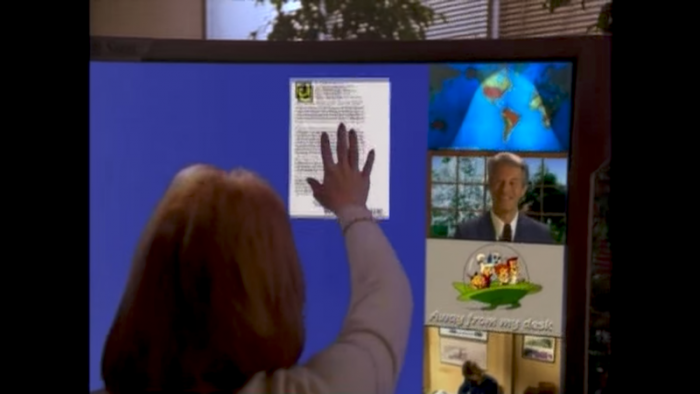Everything Not Saved Will Be Lost
Everything Not Saved Will Be Lost

transmediale ever elusive saw a range of publications launched and publishing practices discussed, among them Across & Beyond, The Temporary Library, and The 3D Additivist Cookbook. Many of the conversations were permeated by questions concerning the idea of format and formatting, along with archives and archiving. Reflecting upon the idea of the festival’s own format and the archive of material it has created over the course of its thirty-year history, Dieter Daniels suggested in his text “transmediale Unformatted” that through its perpetually shifting arrangement, the festival itself likewise resists formalization.
Such considerations find a particularly interesting nexus point in All Sources Are Broken, a recently launched, internet-based project created by Atelier Labor Neunzehn within the frame of the Vorspiel program. Alessandro Massobrio and Valentina Besegher of Labor Neunzehn, who developed the work, describe it as both an artistic experiment and a collaborative re-archival practice, which “presents itself as an open access web content management system for the investigation of hypertext space in post-digital books.” In other words, the project considers how hypertext and print already coexist (as opposed to one superseding the other), through a navigable archive of collected reference material that visitors can both navigate and shape themselves. The work goes beyond the questions such as choosing print “or” digital—which proved some time ago to be a red herring—and focuses instead on modes of dissemination that privilege something that, paradoxically, is too easily lost due to the ease with which we can now access vast swathes of information: context.
The project went online in March at allsourcesarebroken.net, launching with a live-streamed video presentation (archived here) that began with a 14-minute promotional video produced by Sun Microsystems in 1994 titled Starfire. Set in 2004, the video demonstrates how the company’s leading interaction designer Bruce Tognazzini, in collaboration with over 100 specialists, imagined interface design would develop and be used in the future. Tognazzini has said of the project that it “predicted the explosive growth of the world wide web at a time before graphical web browsers even existed. [It] explores in candid detail a technological future based on industry cooperation, human-centered design,” and, tellingly, “the continued presence of bad guys.” The vision is reminiscent of how Douglas Engelbart first imagined “information space” in the 1950s: people seated at individual stations with screen displays working collaboratively, harnessing their collective power to “fly around” and solve complex problems in interactive space.

In Starfire, a worker sits in front of a large blue screen, a piece of office furniture acting as both desk and display. On-screen, she meets with colleagues to discuss a report being prepared, adding visual material via swipes and touches, excising imagery from its original context with ease, altering, and adjusting to paste fragments elsewhere as required. The static files featuring moving elements and animated diagrams are not so far away from the 3D PDFs Morehshin Allahyari and Daniel Rourke showed during their festival presentation of the 3D Additivist Cookbook. The publication asks its users to accelerate new technologies like 3D printing “to their absolute limits and beyond into the realm of the speculative, the provocative and the weird.” The publication’s various digital elements, embedded in the form of .obj files, for example, bring to life the various project blueprints contained within its PDF pages.
Following this introduction of footage lifted from Starfire, Labor Neunzehn’s live-stream then morphed into a dazzling procession of a vast array of “source material”: song lyrics typed into .txt files played in background windows; images lifted from scanned PDFs and turned into placeable clip art appeared in another waiting window. What the viewer saw was something akin to the citations of a book accessed and cross-referenced in real time. In fact, these citations are taken from books but they do not refer to other books; they cite media beyond the realm of printed matter. Head to the same address now and you will find a drag-and-drop interface that allows the same kind of expanded bibliographic melding: everything from DOOM gifs to Cartesian geometry diagrams.

The project’s creators describe their motivation to devise a contextual cross-referencing system thus: “We are interested in tracing a visual approach and creating re-reading strategies starting from the original sources that inform a particular text. To unfold, for instance, the conceptual structure that drives Fredric Jameson to link, in his Postmodernism, or, The Cultural Logic of Late Capitalism, the Monolith in 2001: A Space Odyssey with the Well Fargo Center in Los Angeles—or to compare the original Big Duck built by Martin Maurer with the well-known architecture manifesto of Robert Venturi.”
The work stems from the practice of book-based research that typically characterizes the early development of the artists’ various projects. They describe “a need to extend these research paths in order to set up a repository for the different languages that we gradually met along the way.” All Sources Are Broken was born of the frustration they felt at having to constantly “hobble around the sources.” Drawing upon their design and technical expertise, the pair was also keen to create a work that would engage discussion around the acts of reading and archiving—and how they are subject to the kind of perpetual shifts alluded to by Dieter Daniels.
For a user to arrange these citations on the All Sources Are Broken site involves hypertextual search, which, by its very nature, is still to some degree dependent upon the information contained within a portion of text. However, here the backend structure of ASAB departs from traditional notions of information retrieval. Instead of employing a re-archival approach that prioritizes the encyclopedic, the project instead “aims at elaborating parallel subjects and narrative patterns.” ASAB works to expand books—enhancing “old” media—while keeping track of digital decay (i.e. when hyperlinks become obsolete), thereby archiving as “new” media become old.
Thinking of ASAB’s interest in obsolescence alongside the thematic frame of “ever elusive” brings to mind the manner in which Espen Aarseth, Principle Researcher at the Center for Computer Games Research at the IT University of Copenhagen, has spoken about hypertext, noting that its main feature “is discontinuity—the sudden displacement of the user’s position in the text."1” Labor Neunzehn identifies a similar tendency in its own dealings with orientation and spatiality, engaging “discourse about the space between traditional and new media: on the one hand, the book, which refers to language, and on the other, hypertext, which refers to a complex system of media. Where is the networking function of hyperlinks situated in offline texts?” They explain that it was this “deferred space” they particularly wanted to play with, “the space between offline and online, its delay and decay.”
The frustration—and increasingly common experience—of coming across URLs cited in printed books was one cue here. “Persistence is not applicable to URLs [...] The citation of an online media resource in a book can be broken and lead to an impasse, or, alternatively, it can resurface up-to-date in other portions of text, in other books. There is always latency between language, written word, and hypertext, a sort of elusive and ever deferring repositioning.” But the duo also suggest that precisely this elusiveness can be wielded as a tool, in this case through the project’s use of videoscrittura (an Italian term for writing that occurs “only and thanks to” a monitor). The hope is to build a narrative “similar to that used in experimental cinema, storytelling that begins with the deconstruction of the text, in order to gradually allow—after some initial embarrassment and disorientation—new organizations of discourse to emerge.”

During the festival session to launch Across and Beyond: A transmediale Reader on Post-digital Practices, Concepts, and Institutions, the discussants asked: what does the physical book have to offer now? One of the panellists responded that as result of its material facets, the process of making an object is “hugely collaborative.” In its open-source approach, ASAB too is rooted in collaboration. So if that aspect can be so easily transposed, does this mean it really is time to do away with the paper? Ted Nelson, who originally coined the term hypertext, has gone on record to bemoan the fact that instead of taking advantage of the possibilities of unbridled ways of sharing and displaying information in context, web developers and users have chosen to emulate “the prison of paper.”
However, Labor Neunzehn argues that the print/digital binary does not reflect the reality of how information is disseminated the cycle of paper > digital > paper. On the idea of paper as prison, they are unconvinced: “Linearity and sequentiality are essential components of language. [...] Paper is, in itself, only a surface, just like a monitor. A painter certainly sees paper differently from a writer. It is normal that the hypertext imitates traditional media like books, because it’s about language. The problems arise when the hypertext enters a dead end because its hyperlinks are broken, hidden, or dependent on a login.” Indeed, the two envisage that some kind of print output may result from the material they are gathering online. “For now we are just observing the movement. There is a component of amusement in our project. Since our culture is a product of citations, why not try to explore, or to ‘explode’ those citations.”

The project title, All Sources Are Broken, not only hints at this playful “explosive” approach but also reads as a recognition of how information sources are rendered ever further isolated from their context, as links break or disappear, in contrast to some of the more techno-positivist hopes of the early web. Their attempt to “anchor online media sources in an offline textual discourse is a modality of making archive that takes into account those inconsistencies and doesn’t focus only on preservation, but more precisely on the use of the archive, its dialectic, and its particular ability of being simultaneously both subject and object.”
But evolution and error are not the only catalysts of such erosion. In November 2016, Brewster Kahle, founder of the Internet Archive, began a blogpost on the site with the words: “The history of libraries is one of loss.” He noted that the defining characteristic of the Library of Alexandria is not so much the wealth of information that it contained, but the fact that it was lost. He also announced that his nonprofit digital library intended to create a copy of its collections in another country housed at the Internet Archive of Canada, with reference to the newly elected US administration’s vested interest in erasure. The initiative’s Wayback Machine is intended to ensure that “no one will ever be able to change the past just because there is no digital record of it. The Web needs a memory, the ability to look back.”

Making copies is an admirable strategy, but then there’s the problem of how to ensure access to such backups. Beyond the open-source endeavours of the Internet Archive, Labor Neunzehn point to new approaches to URL persistency, such as Pulrs or DOIs, which attempt to map the Web in terms of objects rather than addresses, but with the caveat that such efforts “appear to be a part of the academic monopoly of knowledge.” They will likely result in “thousands of perfectly organized online archives” that are unfortunately available only for the academically affiliated or those willing (and able) to pay. This reality is counter to the imagined future of open interfaces and collaboration on show in the 1994 Starfire video (even though it acknowledged the “continued presence of bad guys”).
If information architecture, which constitutes the structures in which hypertext operates, were compared to city planning, Labor Neunzehn suggests that “the latest development of the internet recalls the experience of the shopping mall. Just like in a shopping center, the information architecture can work to create paths and barriers intended to direct the choice of the user.” Or, alternatively, it can design strategies that sustain discovery and sharing activities—as ASAB does—with ease of dissemination and contiguity with original context as key tenets.
- 1. E.J. Aarseth, Hyper/Text/Theory (Baltimore: John Hopkins University Press, 1994), 60.



